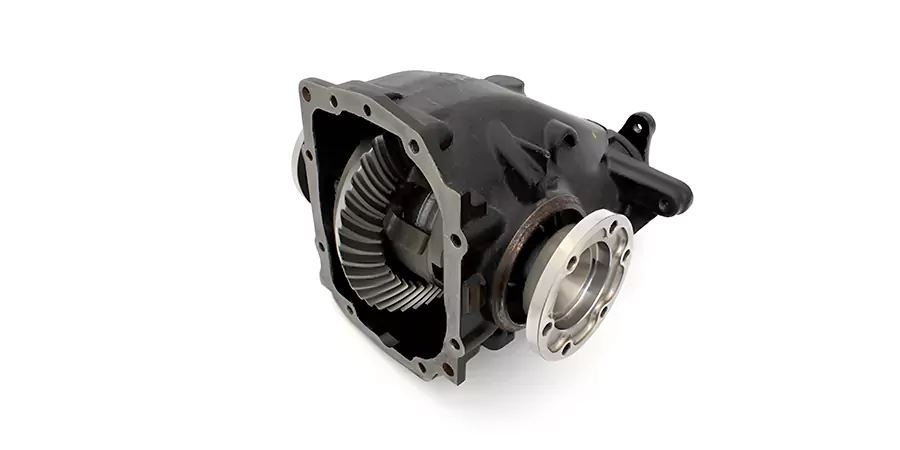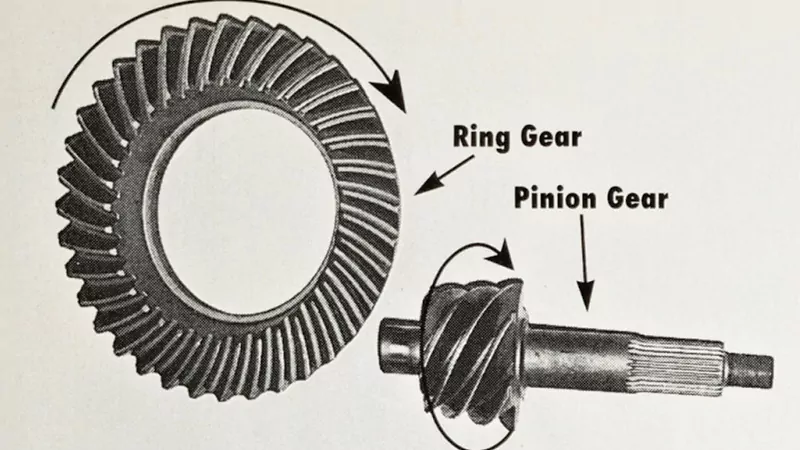
Choosing the right ring and pinion gear set for your vehicle can significantly impact its performance, fuel efficiency, and overall driving experience. This guide will walk you through everything you need to know to make an informed decision about selecting the best gear set for your needs.
Understanding Ring and Pinion Gears
- Ring Gear
The ring gear is a large circular gear mounted on the differential carrier. It surrounds the pinion gear and meshes with it to transfer power from the driveshaft to the wheels.
- Pinion Gear
The ring gear is a large circular gear mounted on the differential carrier. It surrounds the pinion gear and meshes with it to transfer power from the driveshaft to the wheels.
How Ring and Pinion Gears Work
The interaction between the pinion gear and the ring gear is crucial for vehicle movement:
- Power Transfer: The engine sends power through the transmission to the driveshaft, which connects to the pinion gear.
- Gear Engagement: The pinion gear’s teeth engage with the teeth on the ring gear.
- Rotation: As the pinion gear rotates, it drives the ring gear to rotate as well.
- Differential Action: The differential allows the wheels to rotate at different speeds, essential for smooth turns, with the ring and pinion gears ensuring power is effectively distributed.
Key Factors in Gear Selection
- Vehicle Application
- Daily Driving: Requires a balance between acceleration and fuel efficiency.
- Off-Roading: Needs lower gear ratios for better torque and traction.
- Racing: Demands higher gear ratios for enhanced acceleration and speed.
- Axle Gear Ratio
- Definition: The relationship between the number of teeth on the ring gear and the pinion gear.
- Calculation: Divide the number of teeth on the ring gear by the number of teeth on the pinion gear (e.g., a ring gear with 41 teeth and a pinion gear with 10 teeth results in a 4.10:1 ratio).
- Common Ratios:
- 3.55:1 to 3.73:1: Good for daily driving.
- 4.10:1 to 4.56:1: Ideal for off-roading and towing.
- 4.10:1 to 4.56:1: Preferred for racing.
- Material and Build Quality
- Durability: Opt for gears made from heat-treated steel or other high-strength alloys.
- Performance: High-quality materials ensure the gears can withstand the stresses of various driving conditions.
Performance Impacts of Gear Selection
- Acceleration: Lower gear ratios (higher numerical value) provide better acceleration.
- Top Speed: Higher gear ratios (lower numerical value) improve top speed.
- Fuel Efficiency: The right gear ratio can enhance fuel economy by optimizing engine RPMs at cruising speeds.
- Handling and Traction: Proper gear selection can improve handling and traction, especially in challenging conditions.
Conclusion
Selecting the right ring and pinion gear set is crucial for optimizing your vehicle’s performance. By understanding the basics, considering key factors, and avoiding common mistakes, you can make an informed decision that enhances your driving experience, whether for daily commuting, off-roading, or racing. Remember, the right gear set can make all the difference in how your vehicle performs and feels on the road.



